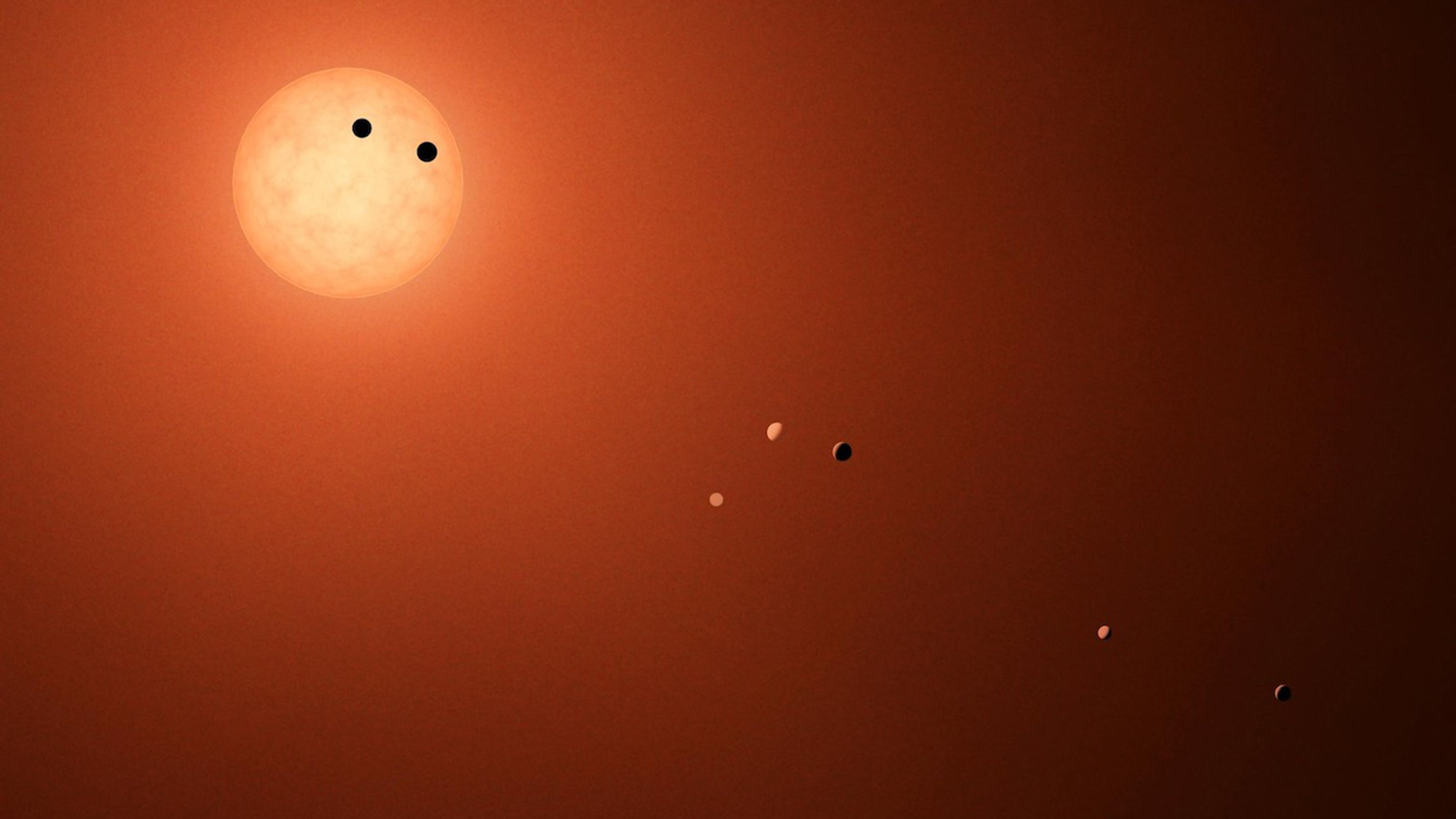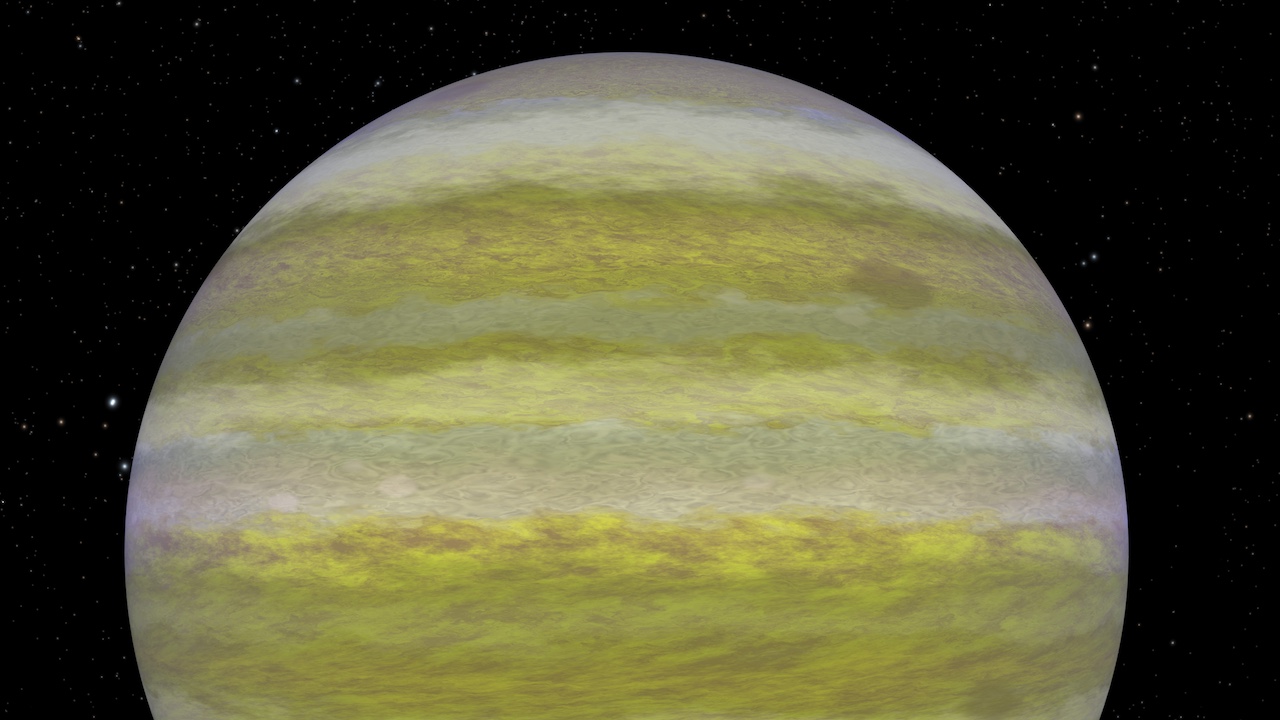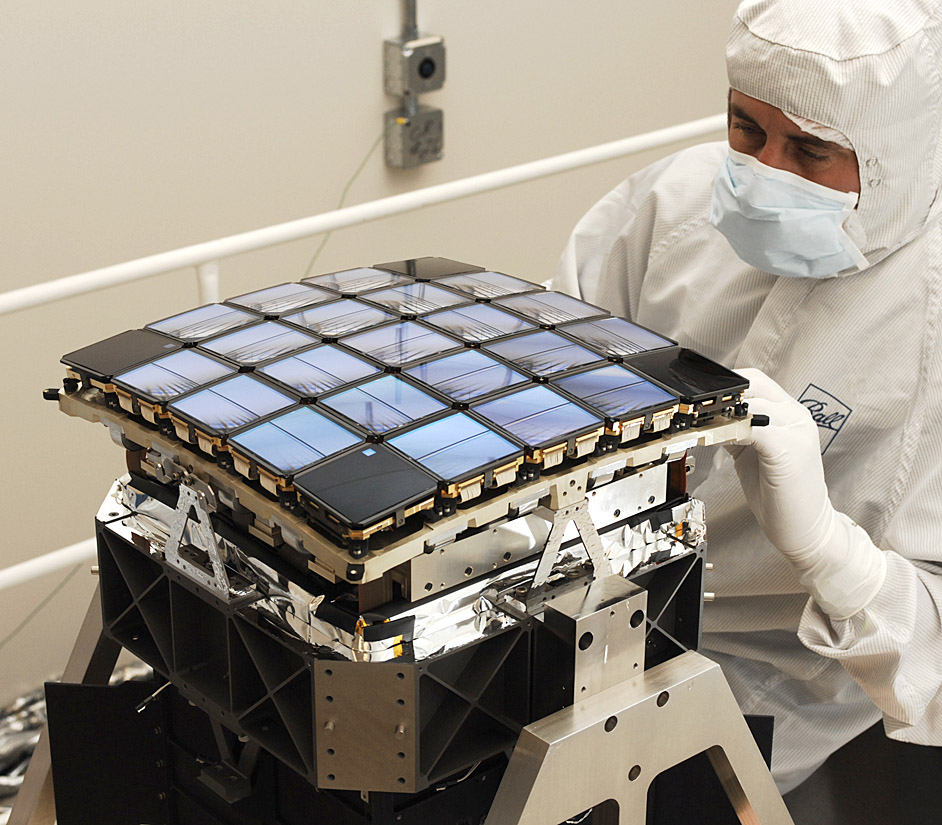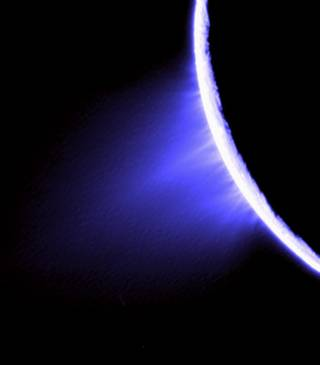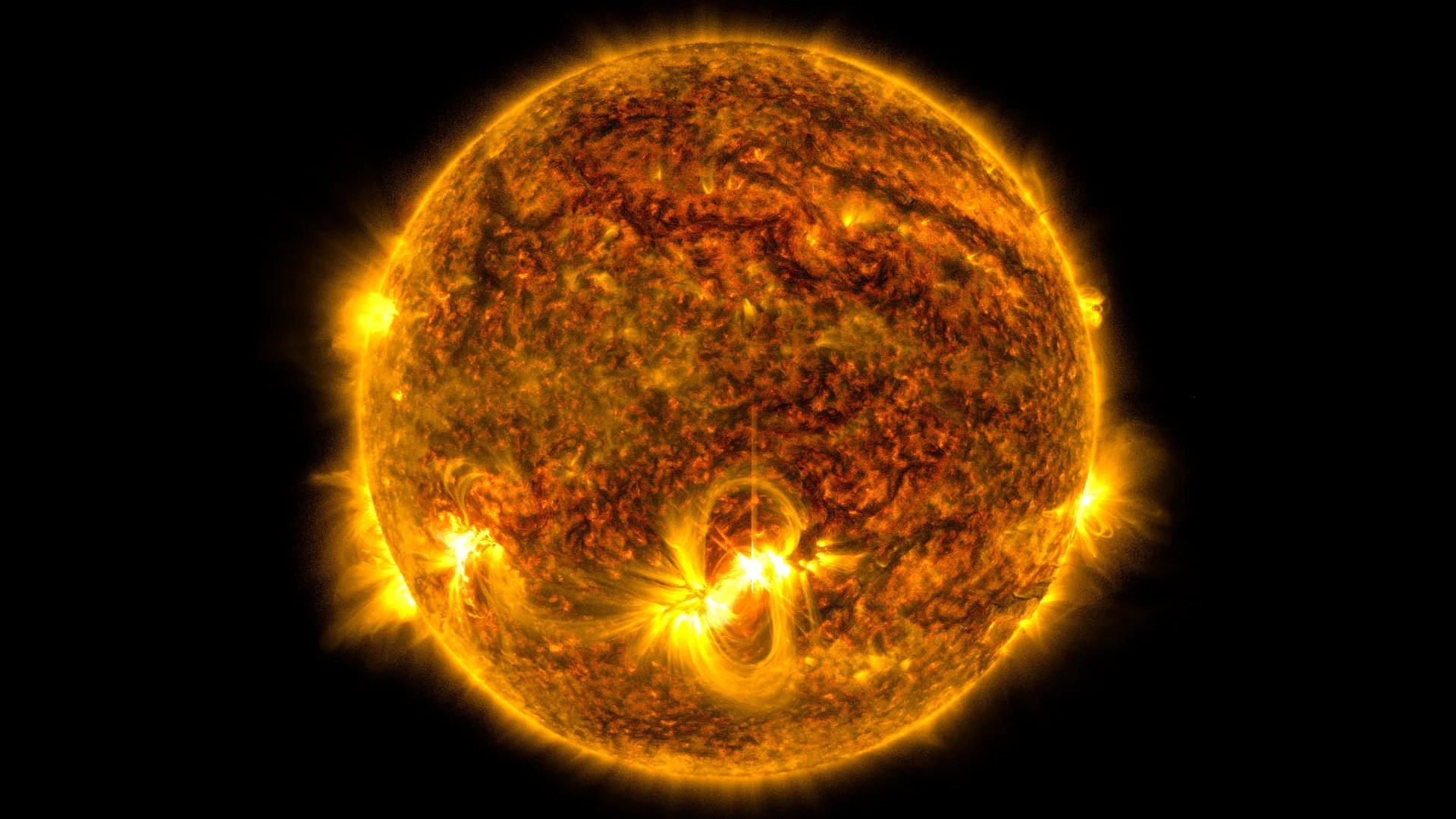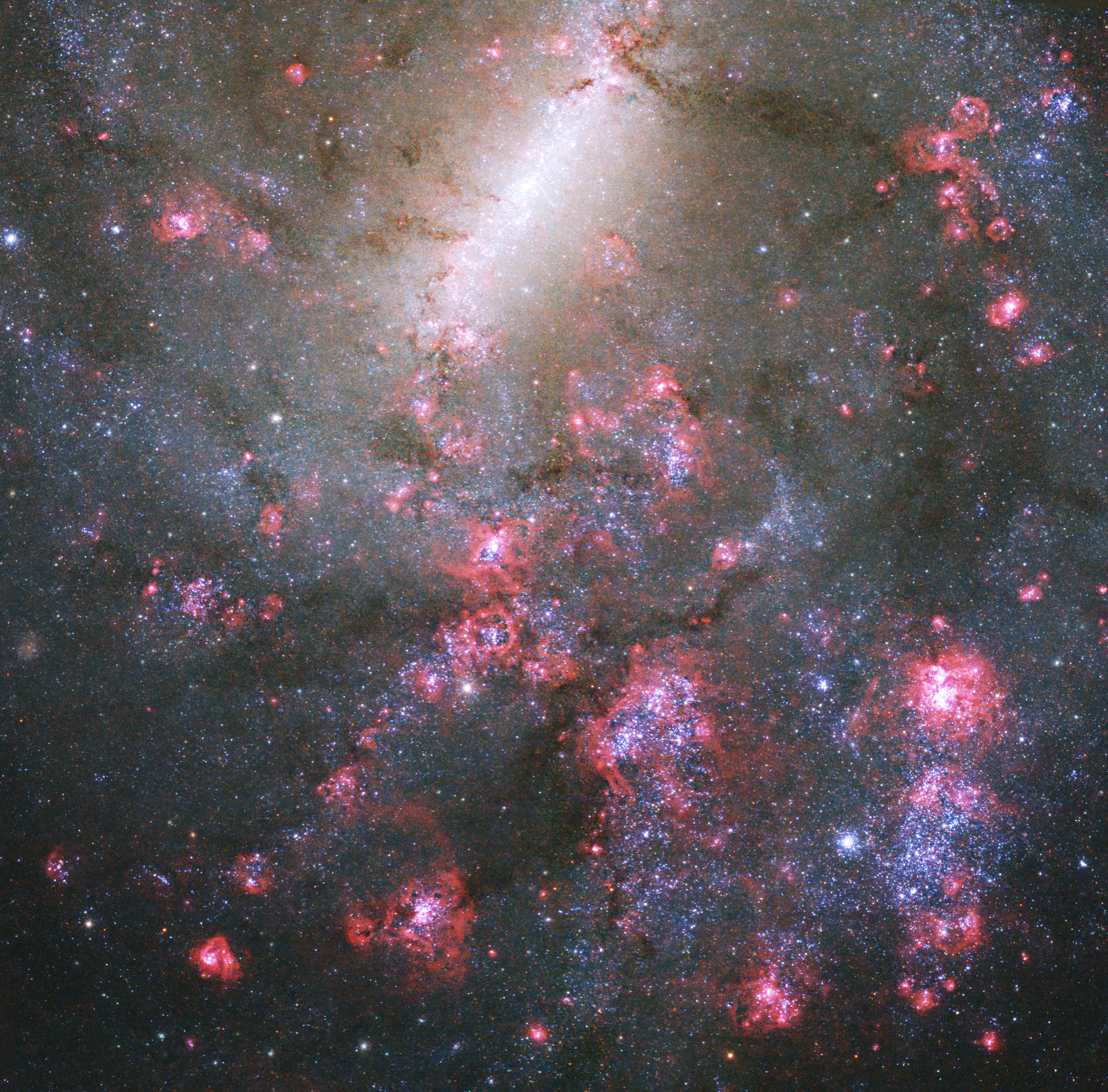12 min read
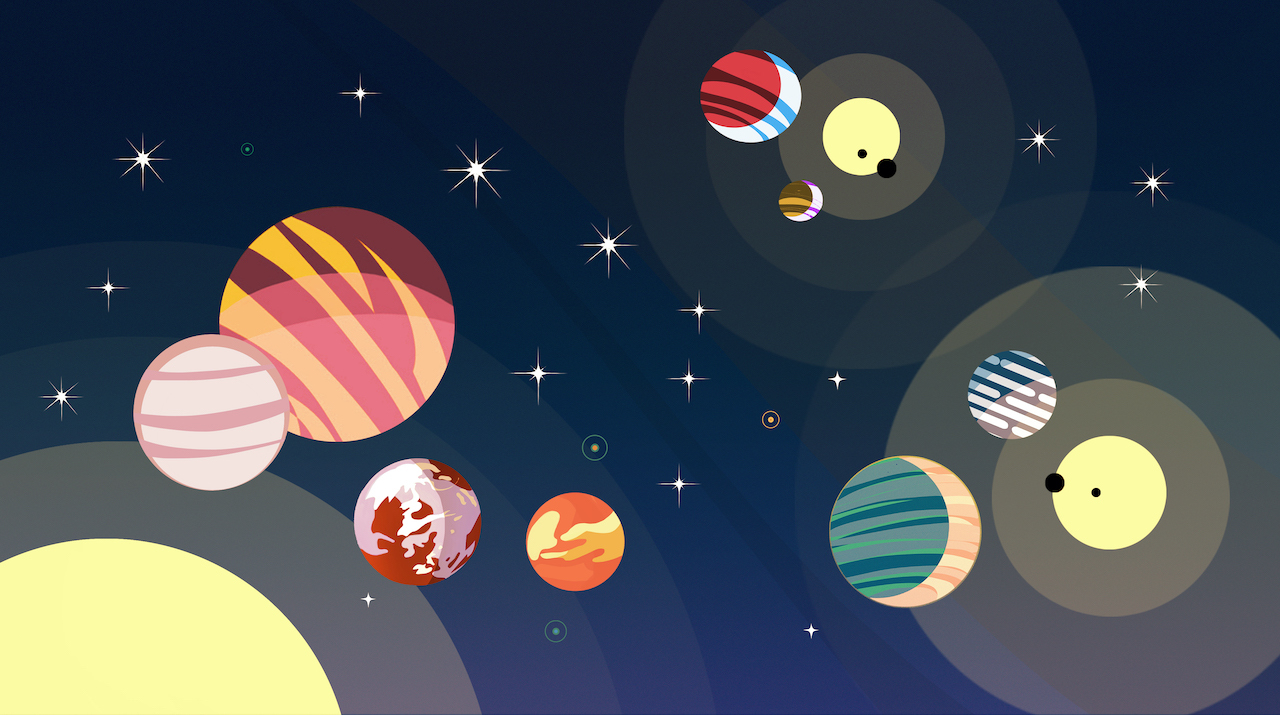
Since a giant planet in a scorching orbit captured public attention in 1995, a sky full of strange and exotic exoplanets – planets orbiting other stars – has only grown richer in variety and detail.
Hot Jupiters, mini-Neptunes, “super-Earths,” planets with two or three suns in their skies, rocky planets drowned in global oceans of lava, planets where it might rain glass – these make up just a short list of oddities among more than 5,500 confirmed so far in our Milky Way galaxy.
And we’ve only scratched the surface. The galaxy likely holds trillions.
The search for life beyond Earth has grown up alongside the search for distant worlds. Computer simulations of possible life-bearing planets look more and more like the real thing. Deeper understanding of possible habitable worlds in our own solar system – Mars, Jupiter’s moon Europa, Saturn’s Enceladus – informs the hunt for life among the stars.
Planetary scientists, exoplanet hunters, and astrobiologists, who seek to understand the origins and requirements of life, have begun to join forces. On many fronts, NASA, with help from its academic and international partners, is leading the charge.
“I never fail to be thrilled by just the energy and innovation and creativity of the exoplanet community,” said Doug Hudgins, program scientist for NASA’s Exoplanet Exploration Program at NASA headquarters in Washington. “One of the things that makes the field as compelling as it is, is that it’s hugely important to people’s worldview, where we are as human beings. Are we alone? It’s directly addressing a fundamental question of humankind.”
Though not the first exoplanet ever found, 51 Pegasi b was the first detected in orbit around a Sun-like star. The planet ignited international excitement when it was confirmed in 1995, ushering in a new era of discovery.
A gas giant with about half the heft, or “mass,” of our own Jupiter, 51 Peg orbits its star so tightly that a year – once around the star – takes only four days.
That keeps 51 Peg infernally hot; life on this planet is out of the question. But 51 Peg showed that exoplanets could be detected by the “wobble” method, or radial velocity – tracking by telescope the gravitational jiggles a planet causes its star to make, tugging it first one way, then another.
This method resulted in dozens, then hundreds of exoplanet discoveries, and is still an important detection method. But since 2009, it’s been eclipsed by the search for shadows.
Also called the “transit” method, this approach involves waiting for a planet to cast a shadow as it crosses (or transits) the face of its star. It’s an extremely faint shadow – a dip in the star’s light that typically amounts to less than 1%.
Radial velocity, watching for wobble

Take a look at the above animation. At first glance, things look normal. There's a big star and a small planet, and the small planet orbits the big star. You've probably seen this many times.
But check out the star. See how it's moving a little bit, too? The effect is exaggerated for this animation, but that's what actually happens in space. The planet's gravity causes the star to 'wobble'around a little bit.
As you might imagine, the bigger the planet, the bigger the effect it has on its star. Small planets, like Earth, make their stars only wobble a tiny bit. Bigger planets, like Jupiter, have a much stronger effect.
Wobbling stars are great for finding exoplanets, but how do we see the wobbling stars?
The method used is one called 'Doppler shift'. It's named after the physicist who figured it out about 150 years ago.
Energy - sound, radio waves, heat, and light - moves in waves. Like the waves you see in the animation above.
Those waves can be stretched and squeezed, based on the movement of the object that's producing them.
You may not know it, but you've probably experienced the Doppler effect before. Have you ever noticed how the sound of an ambulance passing you on the street gets higher in pitch as it gets close to you, and then lower in pitch as it speeds away?
The reason is because when an object that emits energy (like an ambulance speaker or a massive, burning star) moves closer to you, the waves bunch up and squish together. And when the object is moving away, the waves stretch out.
Those changes in the wavelength change how we perceive the energy that we're seeing or listening to. As sound waves scrunch together, they sound higher in pitch. And when visible light waves scrunch together, they look more blue in color.
When sound waves stretch out, they sound lower in pitch. And when visible light waves stretch out, they make an object look more reddish.

This change in color is called 'redshift', and scientists can use it to see if an object in the sky is moving towards us or farther away.
You can see this method working in the animation above. The planet causes the star to wobble around in its orbit, and as the planet moves to and fro, the light waves compress together and then stretch out, changing the color of the light we see.
The radial velocity method was one of the first successful ways to find exoplanets, and continues to be one of the most productive methods. Often, this method will be used to confirm planets found with other methods - an extra step that can prove a planet exists.
Lots of astronomers and telescopes around the world use this method to discover exoplanets, but two notable observatories where this work happens are the Keck Telescopes in Hawaii and the La Silla Observatory in Chile.
NASA’s Kepler Space Telescope began a flood of transit discoveries when it launched in 2009; transit detection is now the dominant method in the field, responsible for thousands of exoplanet finds by numerous telescopes in space and on the ground. And despite Kepler’s retirement in 2020, scientists continue mining data sent home by the space telescope for new discoveries.
Other methods also have yielded discoveries, though far fewer. Still, when it comes to revealing the intimate details of exoplanets, one of them is poised to join the bigger players in the decades ahead: direct imaging.
So far, few exoplanets have been directly imaged – when pixels of light are captured from the planet itself. Very large, very young planets still glowing from the heat of formation are, so far, the only ones to be imaged this way.
Are we alone? It’s directly addressing a fundamental question of humankind.

Doug Hudgins
Program scientist for NASA’s Exoplanet Exploration Program
But planets past their youth, lit up only by their stars, would be targeted for direct imaging by space telescopes now in the conceptual phase. Some of these would use a type of starlight-blocking technology called a coronagraph. This system of masks, prisms, mirrors, and filters inside a telescope blots out the light of a star, revealing the planets in orbit around it.
Another possible technology would deploy a “starshade,” a sunflower-shaped spacecraft as big as a baseball diamond, some 25,000 miles (40,000 kilometers) ahead of a space telescope. The starshade also would block starlight, allowing the telescope to capture direct images of a star’s suite of planets.
A prime target for all these methods is one of the most sought-after and elusive exoplanets of all: an Earth-sized world orbiting a Sun-like star, with a “year” – an orbit – comparable to our own.
It might seem puzzling that, with the head-spinning variety among the thousands of exoplanets confirmed so far, a world checking all these boxes still hasn’t turned up.
But our inability to find such a world is not so mysterious when you consider the technology we have at our disposal. The telescopes and the instruments we attach to them, both in space and on the ground, have made astonishing progress since the early days of the 1990s. They’ve also run up against stubborn limits.
Exoplanets tens or hundreds of light years away are usually much too dim to see, lost in the glare of their stars. Light-blocking technology might one day overcome this barrier, but – aside from those young, self-luminous planets – hasn’t done so yet.
“Exoplanets are just insanely faint,” Hudgins said.
The question of orbital distance is even more of a challenge.
Space telescopes already are powerful enough to pick up transits by Earth-sized planets around Sun-like stars. But they would have to wait far too long to confirm planets with long-period orbits. If the planet has a year comparable to Earth’s, for instance, they’d have to wait on the order of 365 days to see a second transit.
That turned out to be out of reach for the history-making Kepler space telescope, and none of the telescopes launched since then can do so, either.
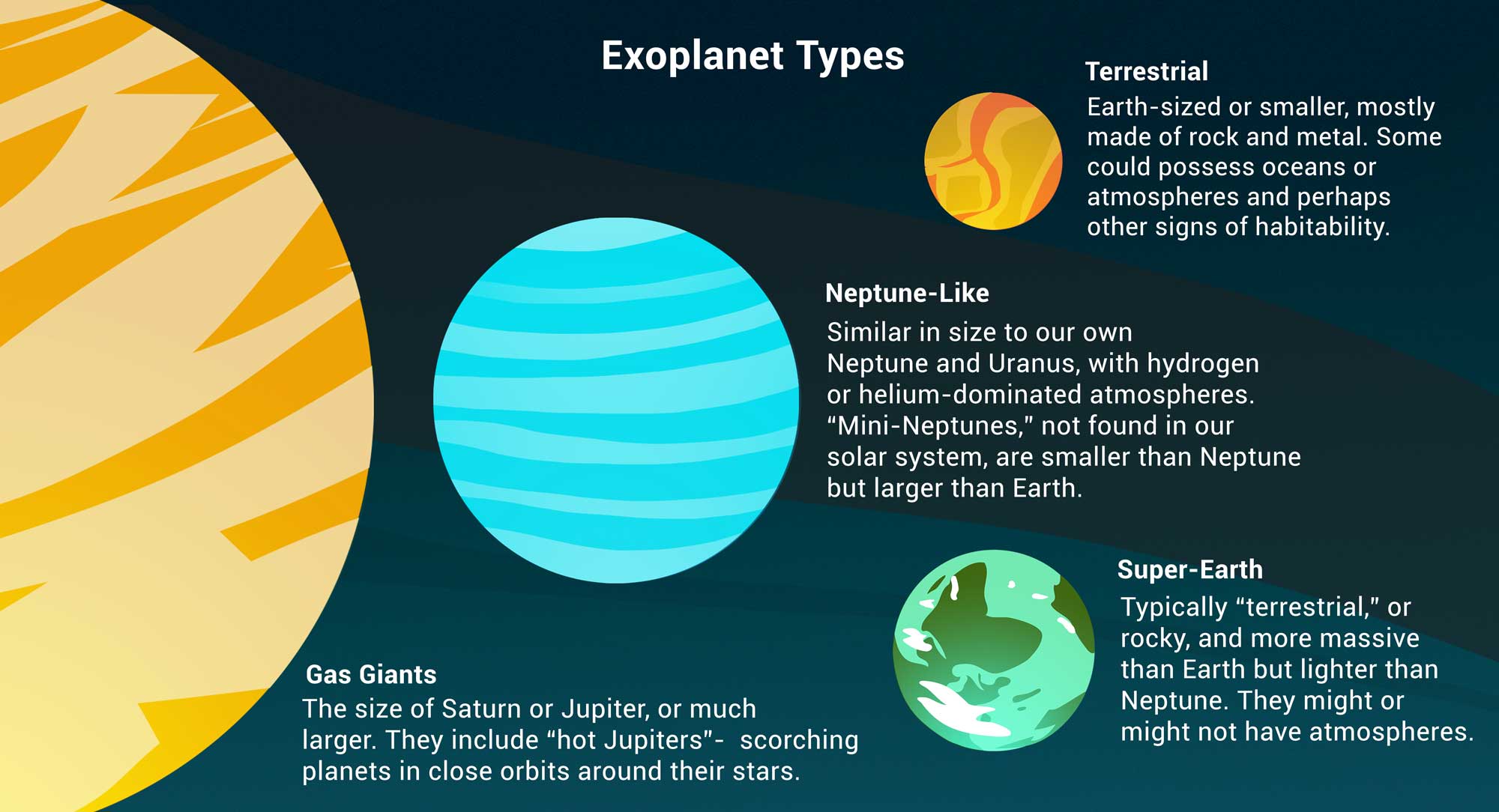
Many small, rocky planets in Earth’s size range have been discovered, like the seven roughly Earth-sized planets orbiting a star called TRAPPIST-1. But all found so far orbit red-dwarf stars – smaller, cooler versions of our own Sun.
While some of these planets might be habitable – though very close to their stars, the lower temperature could allow water to pool on their surfaces – their “years” are typically only a few days long.
Red dwarfs also have a bad habit of erupting with potentially sterilizing flares, especially in their younger years. That could be a disqualifying feature for the habitability of closely orbiting planets, like moths flying too near the flame.
Finding an analog of the Earth-Sun system, or even a likely home for life, also requires far more than just scouring the skies for a world that looks something like our own. Context matters. Learning how life arose on Earth means understanding its origins: its formation from a disk of gas and dust spinning around a newborn star, the formation of its sibling planets, and how this process unfolds in planetary systems around other stars.
Are systems like ours – a large “Jupiter” and other giants farther out, small, rocky worlds closer in – common or rare? Does our system’s family of planets resemble others, or do we look, at the moment, just a bit odd?
“We can’t even begin to understand whether our planetary system is typical or not,” Hudgins said. “We don’t have a complete picture.”
The strangest planets, perhaps, are those we see elsewhere that are not found in our system. “Super-Earths,” or planets as much as 1.8 times as big around as Earth, appear to be fairly common in the galaxy. Are they scaled-up, rocky worlds, like giant Earths, or more gaseous like Neptune, especially at the larger end of the scale? Chalk up another “unknown.”
Another type, often called “mini-Neptunes,” are probably about what they sound like: gaseous worlds smaller than our own Neptune. Why don’t we have one? And why are so many sprinkled around the cosmos?
We’re also mystified by what’s not out there. Between these two size ranges – super-Earths and mini Neptunes – seems to be a kind of demographic desert: very few planets.
It’s been called the “Fulton gap,” after B.J. Fulton, a scientist who outlined their absence in a 2017 paper.
Fulton, a research astronomer at Caltech, says he’s now working to understand why the gap exists, and how it might change for planets around different types of stars.
“It looks like the gap, and the planets around the gap, move to larger sizes when the planets orbit more massive stars,” Fulton said. “It’s a hint, I’d say – not very strong evidence yet.”
Answering many of these questions requires not just observing exoplanets and their stars, but creating computer simulations – models – of other planets and other systems.
Such models are growing in sophistication, representing complex planetary atmospheres, or formation scenarios involving migrations of planets toward or away from their stars.
Models, by definition, never can be truly complete (that would require recreating an entire planet, or system). But they can reveal physics and attributes that surprise the modelers, shedding light on conditions that might be found on real exoplanets including their potential habitability.
This will be critical with space telescopes that can “read” the atmospheres of exoplanets. The James Webb Space Telescope employs “spectroscopy”: breaking down the light from exoplanet atmospheres into a spectrum, creating something like a bar code that reveals which gases are present.
Some of these could be “biosignatures” – signs of possible life – such as oxygen, though this alone would not be definitive.
“It’s not enough to say, ‘Oh, goodie, I have oxygen,’” said Vikki Meadows, an astrobiologist who heads the Virtual Planetary Laboratory in NASA’s Nexus for Exoplanet System Science. “Can you interpret it in the context of the environment? Can you prove that the oxygen didn’t come from planetary processes, rather than life?”
That’s where the modeling comes in. Meadows’ lab creates models of such possible worlds. Although future telescopes in space and on the ground could find oxygen in exoplanet atmospheres, it will be essential to know how it got there. Some models show oxygen can arise without life being present.
“We need to understand as much as possible about the planet we’re looking at, to guard against being fooled,” Meadows said. “Does it have an atmosphere, and what is it like? Does it have oceans? Is that really life?”
As the exoplanets we find grow ever stranger, modeling will be the key to understanding them.
And the astrobiologists, modelers, planet experts, and exoplanet hunters will be the key to finding life.
Only by understanding entire planetary systems, not just a single element, can we take the pulse of a potentially living planet, Hudgins said.
“Job number one is to try to establish a framework,” he said. “Can we bring astrobiologists, planetary science, and astrophysics-technologists all together to make this field of comparative planetology – and ultimately, the search for life – a reality?”
The scientific stakes, it seems, couldn’t be higher.
"The day we detect life on an exoplanet is nothing short of a Copernican revolution," he said. "It changes human beings forever."

